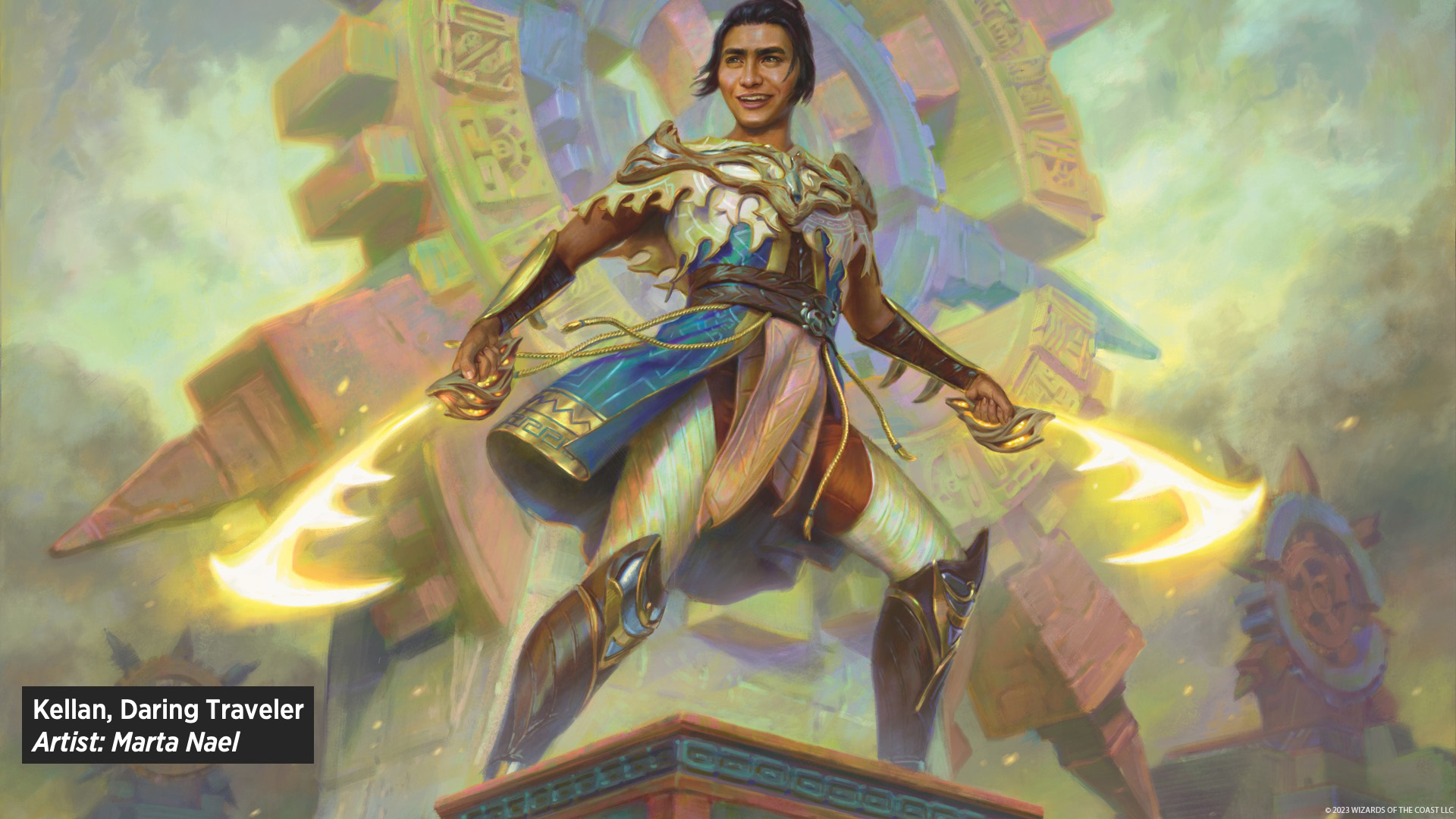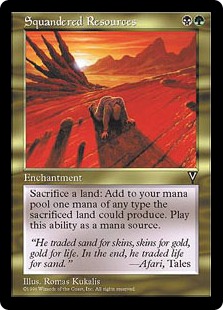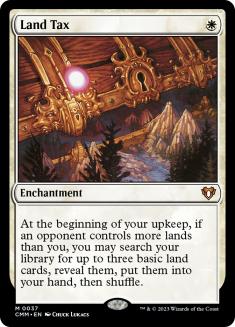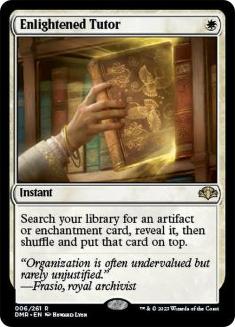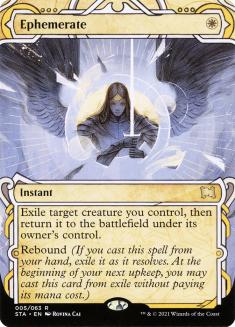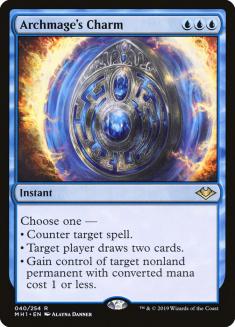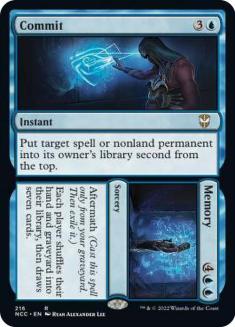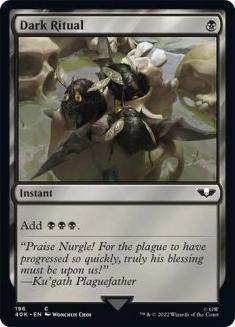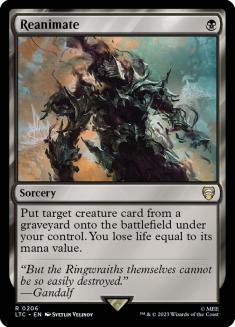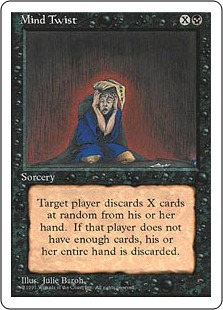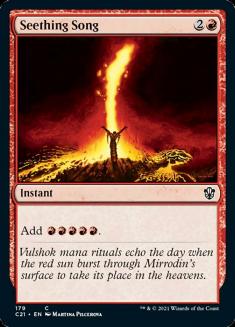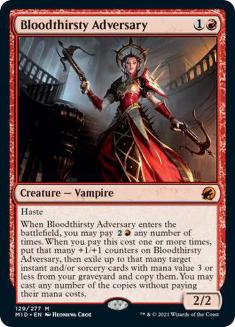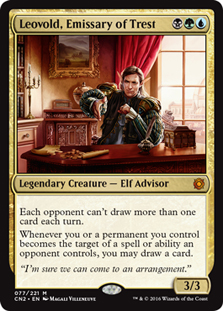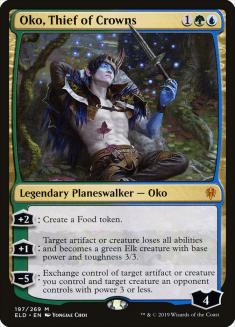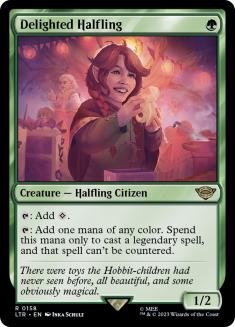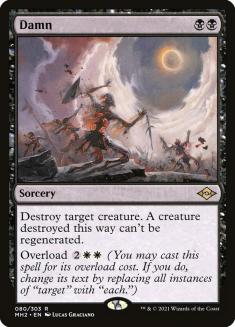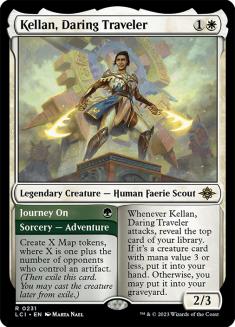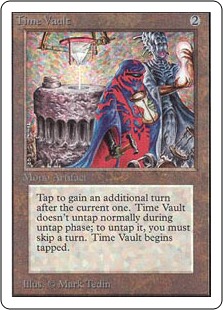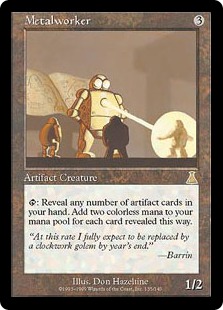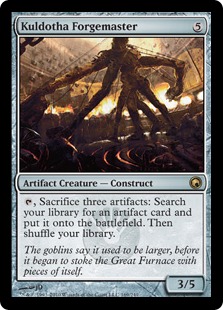Happy April, gamers! Preview season for Outlaws of Thunder Junction is in full gear, but I’m going to give it another week before I really dive into the set, which means today I get to write about one of my personal projects that I’ve been working on for a while now. It’s time to share my 360-card powered Cube with the world!
Last year, I put a lot of work into a 360-card Cube that I called the PG (pretty good) Cube as well as refining a powered Twobert, though the more I played with each, the more I liked the idea of just having a powered Cube for eight players. The recent updates to the Magic Online (MTGO) Vintage Cube have also demonstrated some growing pains as the new curators feel out their role, leaving the digital Cube experience the least resonant that it’s been for me in years. If you want a Cube built to your liking, then there’s nobody better to design it than yourself!
Before I break everything down, you can find the list for my Vintage Cube on Cube Cobra. It should come as no surprise that I feature heavy support for Storm and zero support for Hullbreacher. In general, my list is pushed to the most extreme power level that a singleton Cube can offer, with the initiative and Time Vault Combo being significant features, but Hullbreacher is the one card in Magic that I would prefer to have completely snapped out of existence.
Singular Singletons
When I first assembled this Cube, I biased towards trying to find homes for unique effects that typically don’t show up anywhere these days, with Squandered Resources being the most prominent example of a card that I liked but didn’t quite stick with the list being so tight. Over time, I’ve streamlined things to try to keep parasitic cards to a minimum while still maintaining staple archetypes like Storm and Reanimator. Land Tax exemplifies this as a unique effect that doesn’t necessarily fit in the white column but has consistently made decks and has proven that it can still hang in a powered environment in 2024.
There are about 20% more blue cards than the other colors. I like a color imbalance for Vintage Cubes even at larger sizes, but at 360, you’re going to see Time Walk and Ancestral Recall more often, and it just makes sense to me to increase access to blue cards when there’s a very good chance that any given player will want to at least move into blue for a splash.
The other four colors all have realistic avenues to play mono-color decks or meaningfully contribute to two- to four-color decks, and I don’t see any reason to imbalance the other colors beyond just having more blue cards. This also carries into my gold column, where the blue two-color pairs have an extra card, and Rakdos also has an extra card over the other non-blue pairs, partly because of the long list of great options and partly to balance against Leovold, Omnath, and Atraxa, the only three-plus-color cards in the Cube, not putting a lot of shine on Badlands.
Now let’s break the Cube down by color and really see how it ticks!
White
My white column is pretty basic, with generic white aggressive and controlling decks being the primary supported archetypes. The aforementioned Land Tax and support for the initiative are the spiciest things going on here, though Enlightened Tutor being able to find Time Vault is a big draw and Ephemerate is pretty broken in decks with Solitude and White Plume Adventurer.
Samwise the Stouthearted was a somewhat reluctant recent addition that may or may not have a permanent home. I landed on Sauron’s Ransom being pretty convincingly in the top three Dimir cards of all time, and once I had one card that introduced The Ring, I decided to try a second. I already have the initiative in terms of cards that need supplemental resources to explain what they do, but the initiative is at least busted. Explaining The Ring always feels like a waste of time for everyone, but it still matters a little or a lot because of Karakas, so we’ll see how long the shelf life of these cards turns out to be.
I also don’t find Balance to be especially powerful by the standards of Vintage Cubes today, with there being plenty of cards that actually just win the game in the situations where you would want to cast it. I don’t know that I’ll ever cut the card because it’s just such a Vintage thing, but my hot take is that it’s among the least appealing white cards in the Cube.
The biggest draws to white are solid interaction and ways to gain and contest the initiative. There’s some cuter stuff that I have and could experiment with, but I find this the most satisfying spread of effects that white can bring to high-power environments.
Blue
Outside of blue having the most cards and the best cards, there’s nothing especially fancy going on here. There are counterspells, card selection and advantage spells, artifact synergies, and combo payoffs. Archmage’s Charm is maybe the biggest oddball, but I find it to be a very charming modal spell that is useful against about any kind of deck that your opponent might bring to the table.
I’ve experimented with a number of cards that have faded from Vintage Cube relevance over the years, to varying degrees of success. I give the Consecrated Sphinx in my box of extra cards longing looks now and again, but it’s impossible to fit all of the sixes that I want in the Cube. Commit is the biggest standout among one-time all-stars in my list, and it definitely still kicks with Sheoldred, the Apocalypse and Orcish Bowmasters breathing some new life into Memory.
Recently printed Cryptic Coat has felt pretty medium in the MTGO Cube, but it’s among a handful of cards that I’ve specifically included to help contend the initiative. If I didn’t have initiative cards, I would be out on the Coat, but they go a long way into making most decks actually care about combat in my environment.
Black
I’ve had the most difficulty cutting black down to the same number of cards as the other non-blue colors, which is amusing when I think about all of the cards in the MTGO list that I would cut in a heartbeat. My black column goes hard on Reanimator and Storm and offers a handful of individually powerful cards like Mind Twist that could show up in any deck, and more removal spells than I realistically want but probably the right number to be able to interact early with the best aggressive decks.
Getting down to the exact Reanimator suite that I want has been difficult, walking the line between Reanimator being easy and obvious to move in on in every draft and not having enough support for it to consistently show up at all.
One thing I knew for certain from early on is that I didn’t want Exhume with there being so many creatures that are high-priority takes with Thoughtseize and Grief. There isn’t a need for a reanimate spell that is such a high liability in Cube where you draft all of the cards. I had Shallow Grave and Corpse Dance in for a while, but I found that this left two very disjointed creature cheat decks that made the draft lanes overly tedious without any real upside. This diminishes the significance of the Emrakul in my list some, but there are still more than enough ways to put it on the battlefield.
I feel like the world has largely passed Putrid Imp and Oona’s Prowler by, but I’ve only added more cards with the initiative to the Cube over time. Much like Cryptic Coat, their presence is largely for the purpose of taking the initiative and/or the monarchy. Another quick note is that I generally consider Elesh Norn, Grand Cenobite and Iona, Shield of Emeria to be better Reanimator targets than some stuff that I have like Massacre Wurm, but I bias heavily towards having the cards in the Cube actually be desirable and castable in their respective colors.
Red
Red is mostly an aggressive color in my Cube, with some Storm support and a few options for creature cheat decks as well. I tried including Goblin Welder and Daretti, Scrap Savant, but they’re just so much weaker than the blue options for artifact decks that they weren’t good fits for this environment.
Similarly, there is no reason to run weaker Rituals when all of the artifact mana and black Rituals can so effectively carry the Storm decks. I do still feature Seething Song because there’s just more you can do with a Ritual that generates two mana than something like Desperate Ritual, and I particularly enjoy using Seething Song to cast Bloodthirsty Adversary to then recast the Seething Song.
While I wasn’t fully convinced of red’s ability to hang as an aggressive color when I started this project, Gut, True Soul Zealot and Broadside Bombardiers go a long way in helping the color keep up in 2024 when we don’t get efficiently costed new cards that can damage players anymore. I also see Headliner Scarlett as a massive upgrade over Hellrider in terms of pushing damage when the game starts to get away from you.
Green
Green ramp has lost a lot of its luster in recent years, but it’s still the most powerful thing you can try to push green to do! My Cube doesn’t have much in the way of cards that subsidize this strategy that you don’t see in the MTGO list, but green does gain a lot from elements of that Cube that I eschew. My list is much less hostile to cheap creatures without stuff like Cut Down and Pyrokinesis, so green can have a little more time to breathe. Undermountain Adventurer and Monster Manual, both features of the AlphaFrog MTGO list, also give green a shot in the arm.
A couple of years ago I was pretty big on Mono-Green Ramp in the MTGO Vintage Cube, but a lot of moving parts have caused me to seek additional colors in my green decks. Rofellos is still a scary two-drop, but Leovold and Oko push me into green these days. Luckily there’s an abundance of mana-fixing options among little green creatures!
Gold
My gold column is pretty straightforward, with the cards selected mostly being the most individually powerful cards in every two-color pair. Damn isn’t exactly exciting in an environment this powerful, and I could see swapping it out for Lurrus of the Dream-Den. I wouldn’t expect players to be able to companion Lurrus often in my environment, and I think it’s mostly fine as a card in your starting 40, but it is an option and other sweepers have felt generally weak in this environment.
The gold card in my list that isn’t on the MTGO list that I think absolutely should be is Kellan, Daring Traveler. Selesnya cards in powered Cubes are overwhelmingly awful, but Kellan has been great for me. The card just has good stats, is cheap to cast, and can generate card advantage. It’s also significant that you can just play it in a mono-white deck, and not needing to draft Savannah highly is a serious boon.
Colorless
My colorless column is similarly straightforward, with all of the broken fast mana, powerful effects, and big things to cheat out that you would expect. Time Vault is the big standout here, with Manifold Key and Sonic Screwdriver as combo pieces along with Tezzeret the Seeker. The combo definitely steals a good number of games, but my list is long enough on answers that I really like having this combo around. It’s a Vintage Cube, and it doesn’t get more Vintage than Time Vault!
I’m also a huge proponent of Metalworker and Kuldotha Forgemaster as additional ways to supplement Tinker payoffs and just strong cards to have in my Mishra’s Workshop decks. These cards get better in some ways in larger Cubes just to make sure that players have some ways to power out their payoffs, and worse in others because you do run out of powerful artifacts to include, so a dedicated artifact deck becomes harder to draft. At any rate, I love these cards for powered Cubes of any size, and I would never play Lightning Greaves if it wasn’t to equip specifically to them and Blightsteel Colossus.
Lands
For mana-fixing lands, I have fetches, shocks, duals, and Triomes. I was reluctant on Triomes initially, and even considered just featuring the blue ones, but I’ve come around on how meaningful it is to be able to just play all of the most powerful cards that you drafted, and Triomes go a really long way in making that possible. It is a little upsetting to me to see Jetmir’s Garden in packs of my Cube, but that’s the price you pay for Xander’s Lounge.
I also have all of the broken lands that produce extra mana, Library of Alexandria, Strip Mine… the usual suspects. The one standout here is Gemstone Caverns, with has gotten a reputation for always showing up in broken Constructed decks these days, so it seemed like a good fit to me! It’s especially powerful in decks looking to take the initiative as early as possible, and I’ve been very happy with what the card offers for only one slot.
I’ve also been working on a way to get a couple of additional lands in players’ hands, which I plan to write about in the coming weeks. The long and short of it is that I’ve been really digging the concept of “bonus sheets” in Cube Draft. More on that after Outlaws releases!
Keeping a Vintage Cube to 360 cards is something that I find desirable in terms of actually assembling the most powerful Cube, but also very challenging considering how many very powerful cards there are and managing how parasitic many of these cards can be. I like where my list is at, but I also keep a box that now has over 100 cards in it of cards that are just on the outside of my Cube. I think the experience would be much worse if I just added them all to the Cube, but I do tend to rotate some things in and out every couple of drafts. If people are interested, I might have to write about the contents of my box of maybes!
My impression has been that 540-card Cubes are more popular than 360-card lists, but I’ve always had a strong preference for smaller lists. Particularly in a Cube that is supposed to be about playing with the most powerful cards that Magic has to offer, you really feel the delta in power level between the Top 100 most powerful cards and cards 300-400. This Cube has generated a ton of sweet decks that I don’t think are really possible to draft from larger lists, and I’m really looking forward to continuing working on and playing with this project. It’s certainly not for the faint of heart, but I hope that you like it, too!

